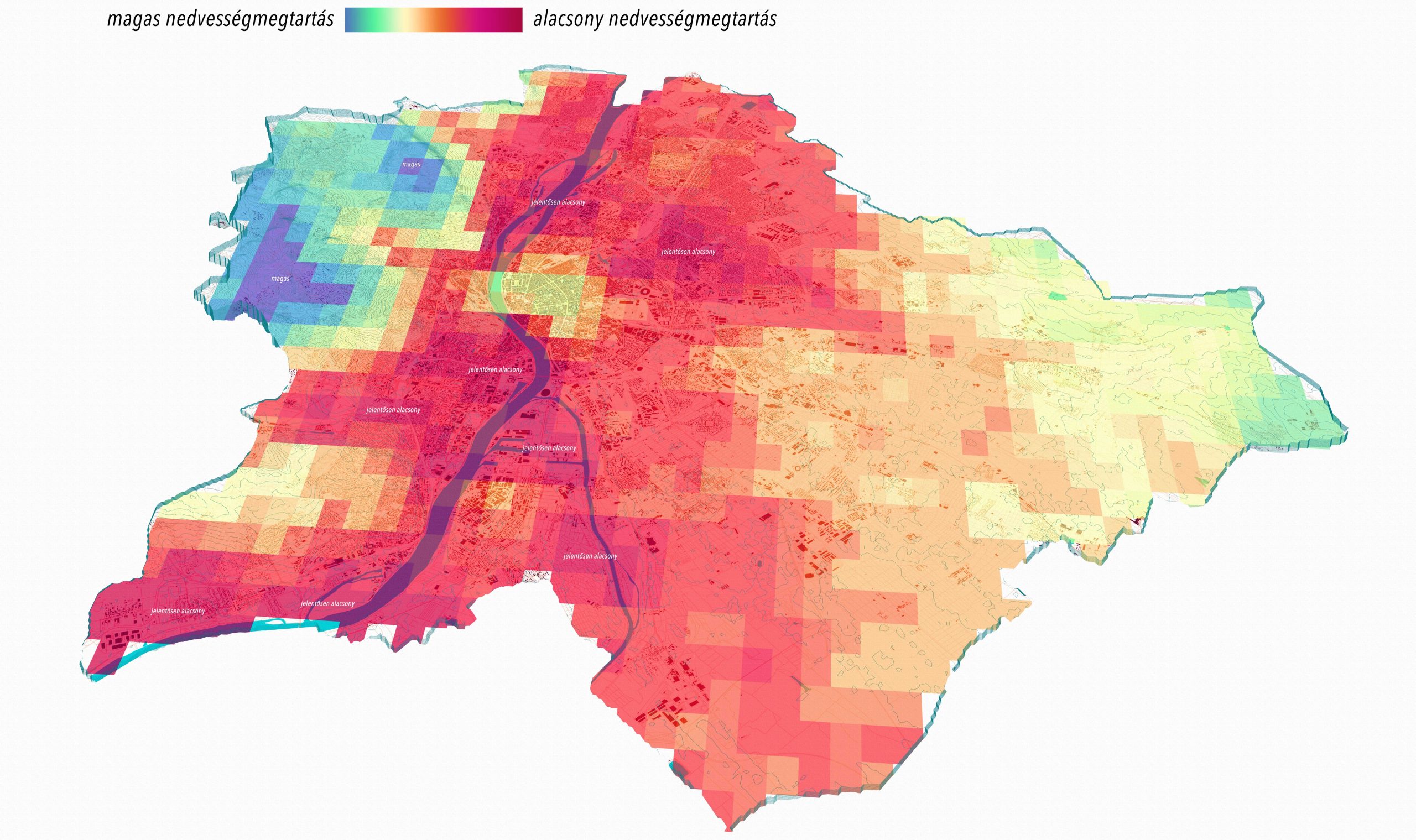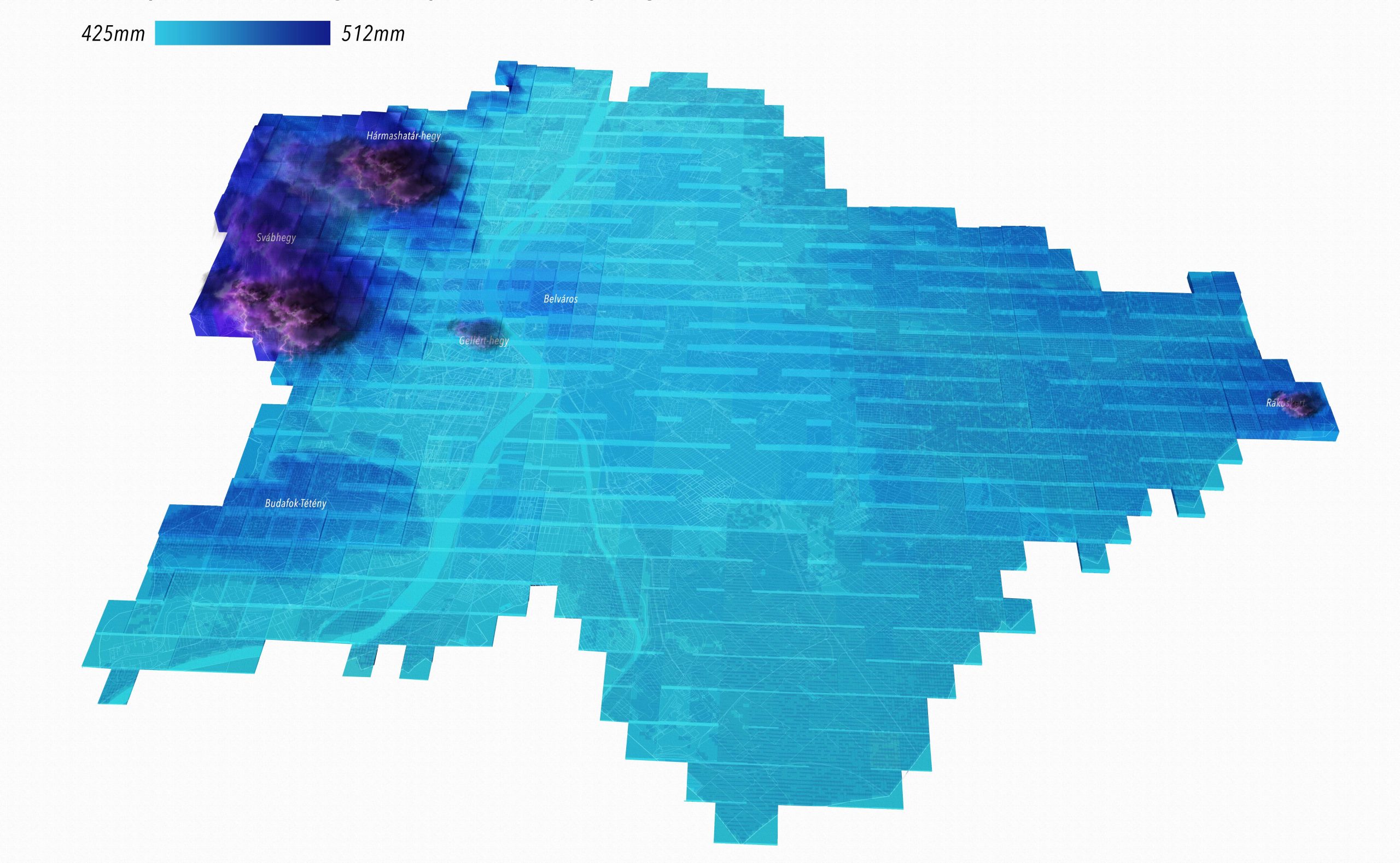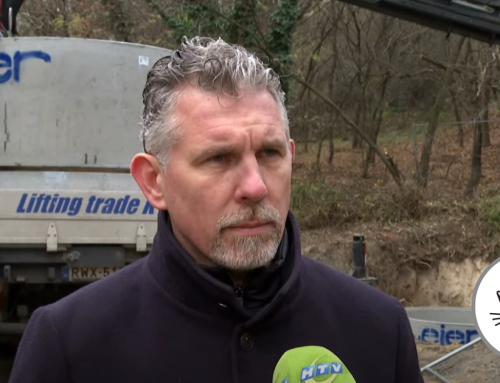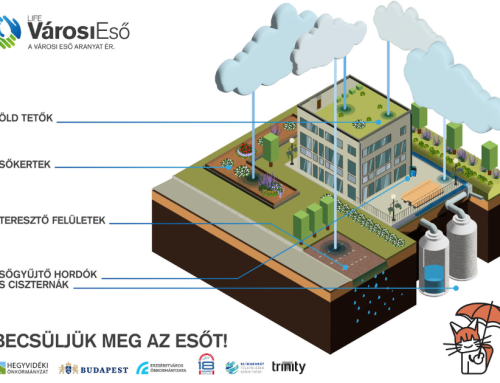One of the most obvious effects of the climate crisis in Budapest is the change in the distribution of precipitation. Annual precipitation is essentially stable (even slightly increasing), but the frequency of rainy days is decreasing steeply. Dry, droughty periods are becoming more frequent, but at the same time, sudden, heavy rainfall is a growing problem, which the ageing basic infrastructure is finding increasingly difficult to handle.
To better adapt to climate change, we need to change our approach to precipitation management, not only to prevent problems caused by stormwater (e.g. flash floods, flooding, damage to buildings), but also to see precipitation as a valuable resource and to maximise its use. This means, among other things, new infrastructure investments and the widespread use of modern rainwater management solutions (e.g. permeable pavements, rain gardens, green roofs, etc.). There is also a need to improve and unify the legislative environment, as rainwater does not stop at the district boundaries. Due to the two levels of local government (district and metropolitan), many of Budapest’s stormwater management issues are unclear. Today, several districts are already regulating the use of stormwater, while at the metropolitan level this is not yet the case.

Budapest Drought Index map

Average annual rainfall in Budapest (source: atlo.team)
A similar problem arises with the uniform financing of the operation of stormwater drainage infrastructure. Generally speaking, the coordination of stormwater management at the metropolitan level and the conceptual, regulatory, investment, etc. decisions are beyond the competence of individual districts.
A rainwater strategy needs to be created, which is currently only in the preparatory phase. The aim is to set a coherent framework and direction for stormwater management in the capital. The LIFE in Runoff project is a very important step in the development of this strategy, as its concrete proposals for intervention will be largely based on the results of the studies to be carried out in the framework of the LIFE in Runoff, as well as on the
The resulting data-driven strategy will make recommendations on the locations and means of stormwater retention, on the possibilities for local rainwater harvesting, and on how to protect against urban flooding and flash floods caused by rainfall.
The strategy will be prepared by the Climate and Environment Department of the Mayor’s Office and approved by the Municipal Assembly. The document is expected to be presented to the Municipal Assembly in 2025.
Image source: wikipedia





Leave A Comment